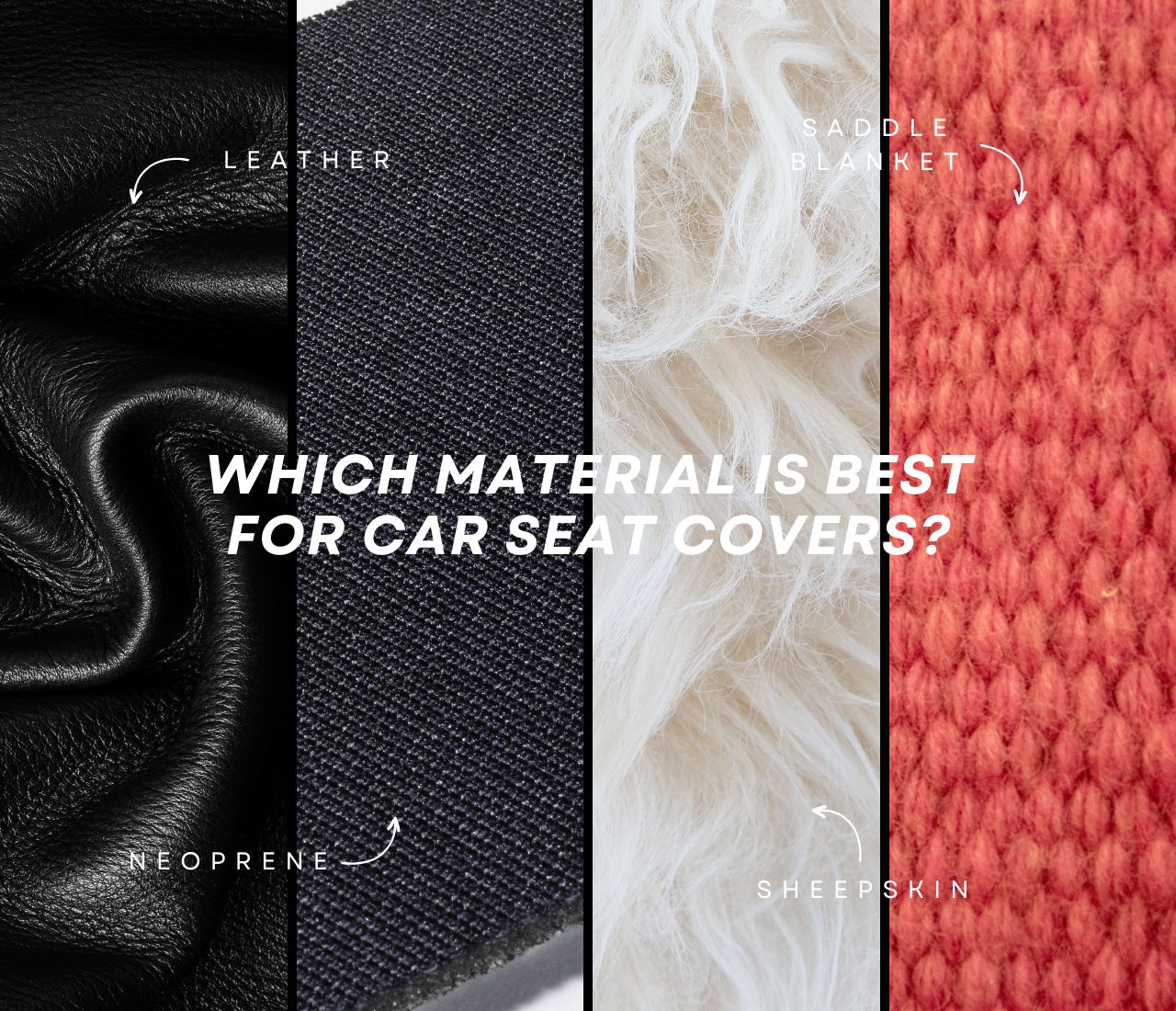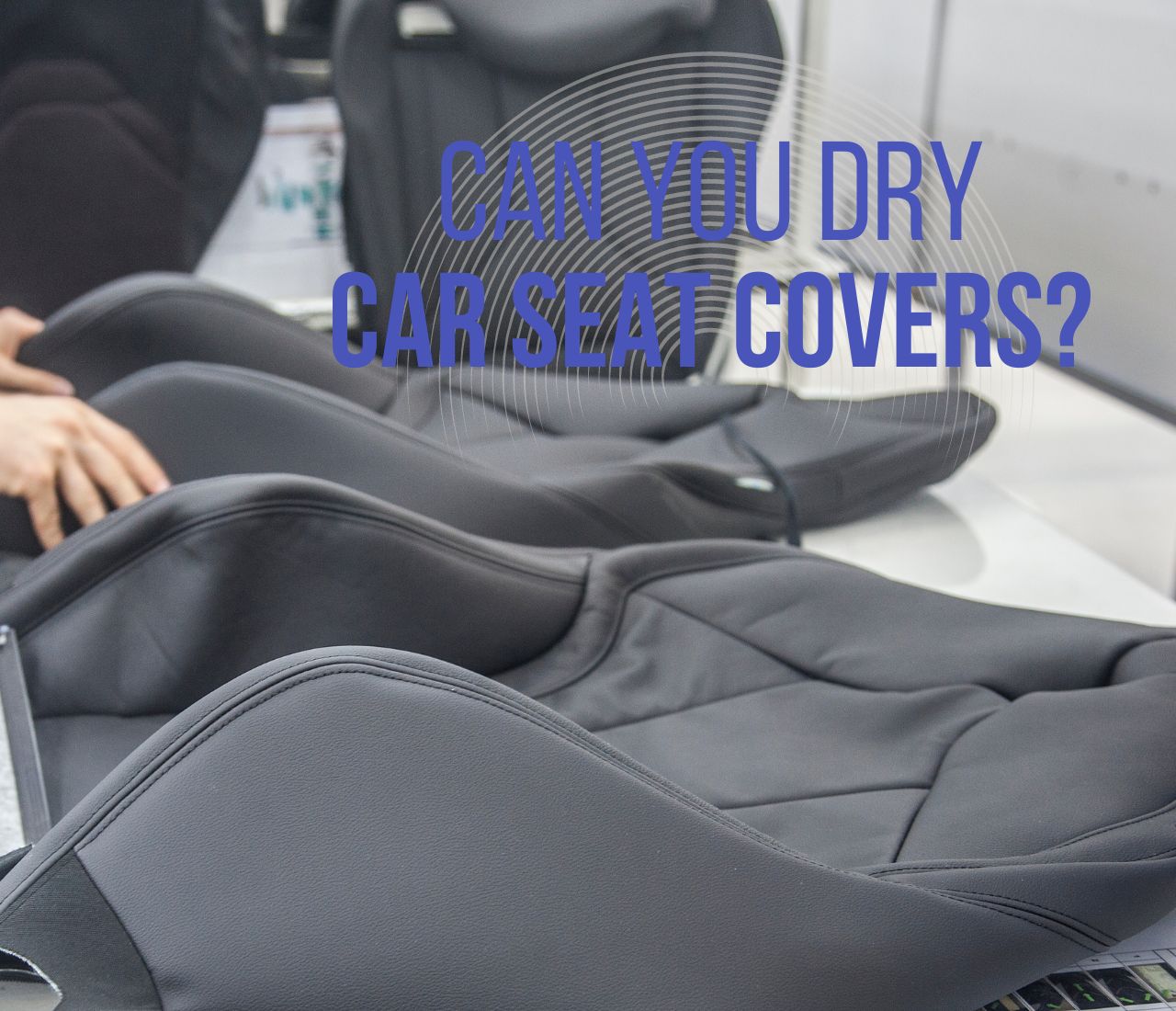When it comes to choosing the right car seat covers, the material matters. It can make a difference in comfort, durability, and ease of maintenance. But with so many options available, how do you know which one is the best for you? In this guide, we will explore the pros and cons of various materials used in car seat covers, helping you make an informed decision.
Understanding the Importance of Car Seat Covers
Before we delve deeper into the specifics of different materials, it's crucial to comprehend why car seat covers hold such importance. Car seat covers serve a multitude of purposes that extend beyond mere aesthetics.
Car seat covers act as a protective shield for your car seats, safeguarding them from spills, stains, and general wear and tear that can occur over time. They can significantly extend the lifespan of your car seats, maintaining their appearance and comfort.
Moreover, car seat covers can transform the look of your car's interior. With a wide range of materials, colors, and designs available, you can personalize your car to reflect your style and preferences.
At Alex Car, we provide an extensive selection of car seat covers in various materials, each designed to cater to different needs and tastes. Whether you're seeking durability, comfort, style, or all three, you're sure to find a car seat cover that fits the bill.
Leather - The Classic Choice
Leather seat covers are a popular choice among car owners for their luxurious look and feel. They are durable, easy to clean, and can withstand the test of time.

Pros
- Durability: Leather is a robust material that can resist scratches and tears, making it ideal for those with pets or children.
- Easy Maintenance: Spills and stains can be easily wiped off from a leather surface.
- Aesthetics: Leather adds a touch of elegance and sophistication to your car's interior.
Cons
- Cost: Leather seat covers are typically more expensive than other materials.
- Heat Absorption: Leather can become uncomfortably hot when exposed to sunlight for extended periods.
- Requires Regular Care: To maintain their look and feel, leather seat covers need regular conditioning.
Neoprene - The Sporty Alternative
If you're an outdoor enthusiast or live in a wet climate, neoprene seat covers could be the perfect fit for you. Neoprene, the same material used in wetsuits, offers excellent water resistance.
Pros
- Water Resistance: Neoprene provides a high level of protection against spills, sweat, and rain.
- Comfort: These seat covers are soft and comfortable, making them ideal for long drives.
- Heat Resistance: Unlike leather, neoprene does not get too hot or too cold, providing a comfortable seating temperature.
Cons
- Not Breathable: Neoprene is not a breathable material, which can lead to a sweaty back on hot days.
- Color Fading: Over time, the color of neoprene seat covers can fade due to sun exposure.
Sheepskin - The Comfort King
For those who prioritize comfort above all else, sheepskin seat covers are a fantastic choice. They provide a plush, cushion-like feel that is hard to beat.
Pros
- Comfort: Sheepskin is incredibly soft and comfortable, providing a luxurious seating experience.
- Temperature Regulation: Sheepskin is a natural insulator, keeping you warm in winter and cool in summer.
- Durability: When properly cared for, sheepskin seat covers can last for years.
Cons
- Maintenance: Sheepskin requires more care than other materials to keep it looking and feeling its best.
- Cost: High-quality sheepskin seat covers can be quite expensive.
Waterproof - The Practical Solution
If you have kids or pets, or if you often eat and drink in your car, waterproof seat covers can be a lifesaver. They offer excellent protection against spills and stains.

Pros
- Spill Protection: Waterproof seat covers prevent liquids from soaking into your car seats.
- Easy to Clean: Most waterproof seat covers can be easily wiped clean or machine washed.
- Durability: These seat covers are typically made from robust materials that can withstand daily wear and tear.
Cons
- Comfort: Waterproof seat covers may not be as comfortable as other materials.
- Aesthetics: They may not offer the same visual appeal as leather or sheepskin covers.
Saddle Blanket - The Rustic Option
For those who prefer a rustic or western aesthetic, saddle blanket seat covers are an excellent choice. These seat covers are made from a durable woven fabric that is designed to withstand the rigors of the outdoors.
Pros
- Durability: Saddle blanket material is tough and can handle a lot of wear and tear.
- Unique Aesthetic: These seat covers offer a unique, rustic look that can add character to your car's interior.
- Affordable: Saddle blanket seat covers are generally more affordable than leather or sheepskin options.
Cons
- Comfort: While durable, saddle blanket material is not as soft or comfortable as other options.
- Maintenance: These seat covers require regular cleaning to keep them looking their best.
Polyester
Polyester is a synthetic fabric made from petroleum materials. It's a very common material used in all types of products, like clothing, furniture, and car seat covers.
Polyester seat covers provide these benefits:
- Inexpensive compared to other materials
- Good durability and abrasion resistance
- Quick drying if wet
- Resists stains, spills, and fading
- Easy to clean by machine washing
- Wide range of colors and textures
Polyester fabric is also breathable, smooth, and comfortable against your skin. It adapts well to different temperatures.
The drawbacks of polyester include:
- Can pill or fray over time
- Doesn't breathe as well as natural fabrics
- Can hold odors over time
- Not as luxurious feeling as leather or neoprene
Polyester is best suited for car owners who want an affordable seat cover that gets the job done. While not as premium feeling as other materials, polyester is a practical option.
Microfiber
Microfiber is made from ultra-fine synthetic fibers. It's used to make fabrics that feel almost as smooth as silk.
As a seat cover material, microfiber offers these benefits:
- Very soft, almost suede-like feel
- Breathes well to prevent sticky seats
- Repels water, oil, and stains
- Machine-washable and quick drying
- Resists pilling, wrinkles, and abrasion
- Affordable price point
Microfiber does attract lint and dust more easily than other materials. But it's simple to clean.
This fabric excels at providing comfort at an affordable cost. If you want soft, breathable covers that repel spills and stains, microfiber is an excellent choice.
Vinyl
Vinyl is an affordable synthetic material commonly used for car seat covers. It's made of plasticizer and PVC resin.
Vinyl seat covers offer these benefits:
- Very low cost material
- Durable and long-lasting
- Resists cracking and splitting over time
- Repels liquid spills
- Easy to clean with soap and water
- Good variety of colors and patterns
On the downside, vinyl can feel rubbery or sticky, especially in hot temperatures. It also doesn't breathe very well, so you may sweat more.
Vinyl is best for car owners who want the most inexpensive option. It holds up well over time and protects your seats. Just don't expect the supple feel or breathability of higher-end materials.
Choosing the Best Material
When deciding on seat cover fabric, consider your budget, climate, how you use your car, and personal preferences.
Leather and sheepskin offer luxury and comfort but have a higher cost. Neoprene and polyester provide good durability at an affordable price. Vinyl is inexpensive but can feel rubbery in hot weather.
Think about how often you drive passengers or have kids and pets in your car. Leather withstands heavy usage well. But active families may prefer machine-washable options like neoprene or polyester.
Also, assess your climate. Breathable materials like leather, microfiber, and sheepskin work best in hot regions. Neoprene and vinyl insulate better for cold weather usage.
It helps to visit a store to feel different materials first-hand. Bring fabric swatches out to your car and see how they complement the interior.
With this guide, you can zero in on the right fabric for your needs and budget. Investing in quality seat covers pays off in comfort and protection for your car's interior.



Leave a comment
This site is protected by hCaptcha and the hCaptcha Privacy Policy and Terms of Service apply.